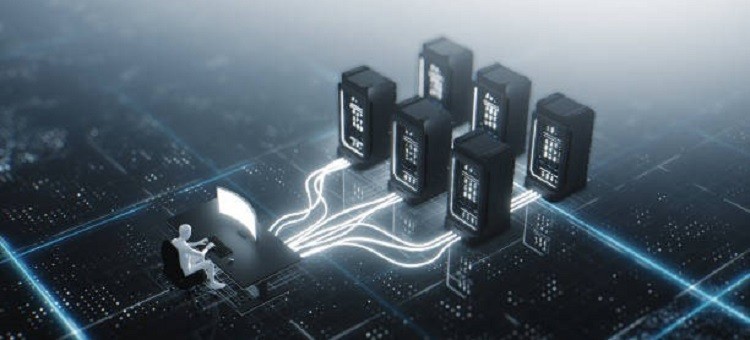Virtualization technologies have the capability of transforming businesses and making them future-ready. Sustainability is a significant concern as energy costs, and global warming concerns are rising.
Virtualization can save on energy costs and reduce your company’s carbon footprint. This can be achieved while lowering server infrastructure costs and saving time and resources.
A survey of SMEs showed that businesses spent 73% less time on repetitive administrative tasks by opting for virtualization.
VDI and VM are two such solutions using which you can implement virtualization. The article will delve into these virtualization techniques, their types, and how they can benefit your business.
What are VDI and VM?
Virtual desktop infrastructure (VDI) is a technology that employs virtual machines (VM) to manage virtual desktops on end systems. In this setup, the operating system, applications, and data are stored and managed centrally on the server.
When the user connects to the system, all operations are executed on the server in the data center. This provides improved security as the virtual desktop does not store the data.
A virtual machine acts as an image of the physical computer. It virtually segments resources like CPU, memory, and storage. So, a single computer can be split into several VMs.
These VMs can host different operating systems and applications. So, it is an ideal solution for work computers. Moreover, the VM is partitioned from the rest of the system, allowing no interference with the processes of the host system.
VDI technology needs VM to function, but the vice versa is not true. You can implement VM on its own.
Difference Between VDI and VM
1. Creation Process
VDI
Before we get into the VDI creation process, let us understand its key components.
A hypervisor is software that creates and runs VMs on the host machines. It separates the OS and applications from the underlying hardware, which helps it create multiple VMs with its own resources.
A connection broker is a link between the VDI system and end devices. It is how users gain access to a virtual desktop.
So, the VDI creation process starts with the hypervisor creating VMs to host virtual desktops. Then, when a user successfully logs in to the VDI environment, the connection broker finds a virtual desktop with sufficient resources.
The user receives the virtual desktop screen of their client terminals which can be operated through their mouse and keyboard.
VM
A virtual machine is created by running software on a physical device. The physical device is the host, while the different images running on it are called guests.
Again, the hypervisor is responsible for creating these VMs on the machine. Two types of hypervisors are used – Type 1 and 2.
- Type 1 hypervisor is installed directly on the host. There are no additional layers between the host and the VMs. So, the two entities directly communicate for resources.
- Type 2 hypervisors are installed on the OS of the host. It acts as a layer between the host and the VMs. However, this technique is slower as all VM requests have to go through the host’s OS.
2. Different Types
There are two types of VDI:
- Persistent
- Non-Persistent
A persistent VDI saves the users’ preferences. For example, if an employee logs in to the same virtual desktop daily, it will be beneficial to retain their settings. It helps save employee time and effort. It will, though, require more storage.
A non-persistent VDI will return to the virtual desktop’s default settings once the employee logs off. You may connect to the same or different desktop, but the desktop will not save user preferences either way. This type is useful when you have a large workforce. It also comes in handy when providing desktop access to public users.
There are two types of VM:
- Process
- System
A process VM allows a single process to run as an application on the host device. The virtual platform is created for that particular process and is destroyed once it completes. Java Virtual Machine and Parrot Virtual Machine are examples of process VMs.
A system VM is a complete virtual image that can be used as a standard desktop. Here the hypervisor will segment the host resources among the guests. You can have a different OS running on these images, and they will not interfere with the host machine.
3. Application
Here are the application areas of VDI:
- Regardless of the industry, VDIs can provide a secure work environment for small to large organizations if your business runs on the remote work model. The global VDI industry was valued at $5.8 billion in 2021, and the growth trend is expected to continue. Digitization and virtualization across sectors are key growth factors.
- MSPs with offerings like outsourcing IT service desk can remotely tend to clients’ objectives like security and compliance.
- Healthcare organizations can ensure HIPPA and CMS guidelines are followed across devices.
- Non-persistent VDIs can be used in schools, colleges, or libraries where multiple people access a single machine.
Here are the application areas of VM:
- A virtual machine is a mandatory piece of technology used for VDI implementation. So, all the applications mentioned above need VM to function.
- Companies can use VM to train employees on different OS.
- You can use them to test applications on multiple platforms.
- You can clone the VM and transfer the files to another computer to maintain consistent images among team members.
4. Benefits Offered
Here are some benefits offered by VDI:
- A more secure environment as data is stored and processes are executed on the server.
- IT resources can be centrally managed.
- Cloud VDI solutions let authorized users connect to the system from anywhere using any device.
Here are some benefits offered by VM:
- Reduced security risk as the VM is partitioned from the host.
- Hardware expenses are significantly reduced.
- The guest OS makes it possible to run older applications.
Summary
VDI is a technology that creates virtual desktops. Data and applications are stored on a central server. It offers improved protection against cyber threats. VDI implementation will be ideal for your business if you offer remote working.
On the other hand, a VM creates a virtual replica of the host system. The replica will have its own CPU, memory, and other resources. For businesses that still use legacy applications or are into developing new software, VMs provide a safe environment to run and test.
VDI and VM can help reduce costs and improve security, but the choice of virtualization technology depends on your business requirement.







